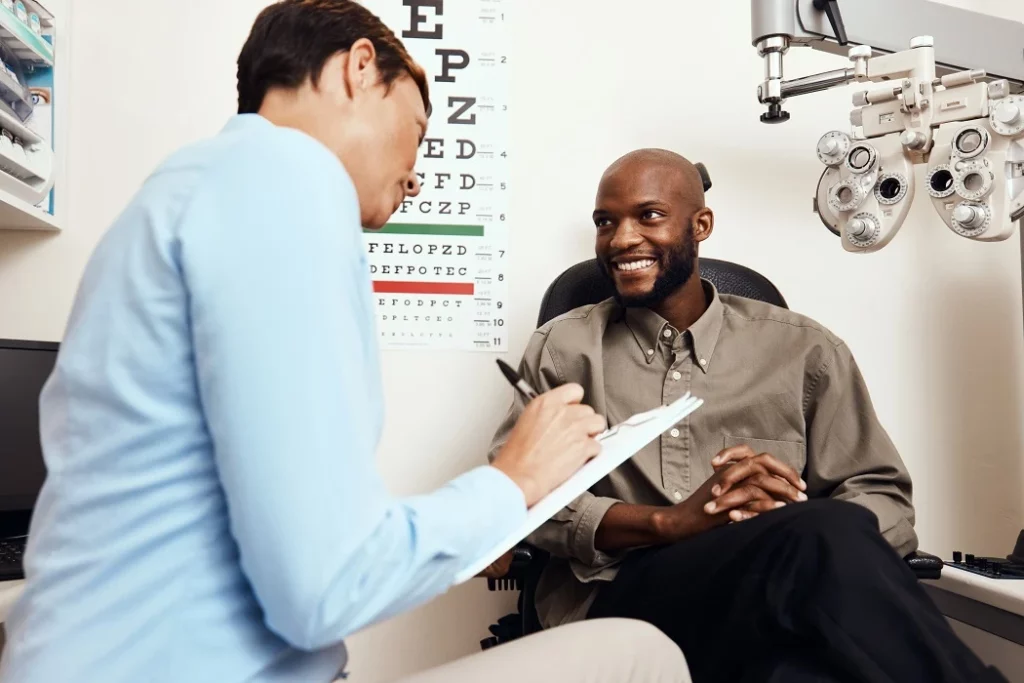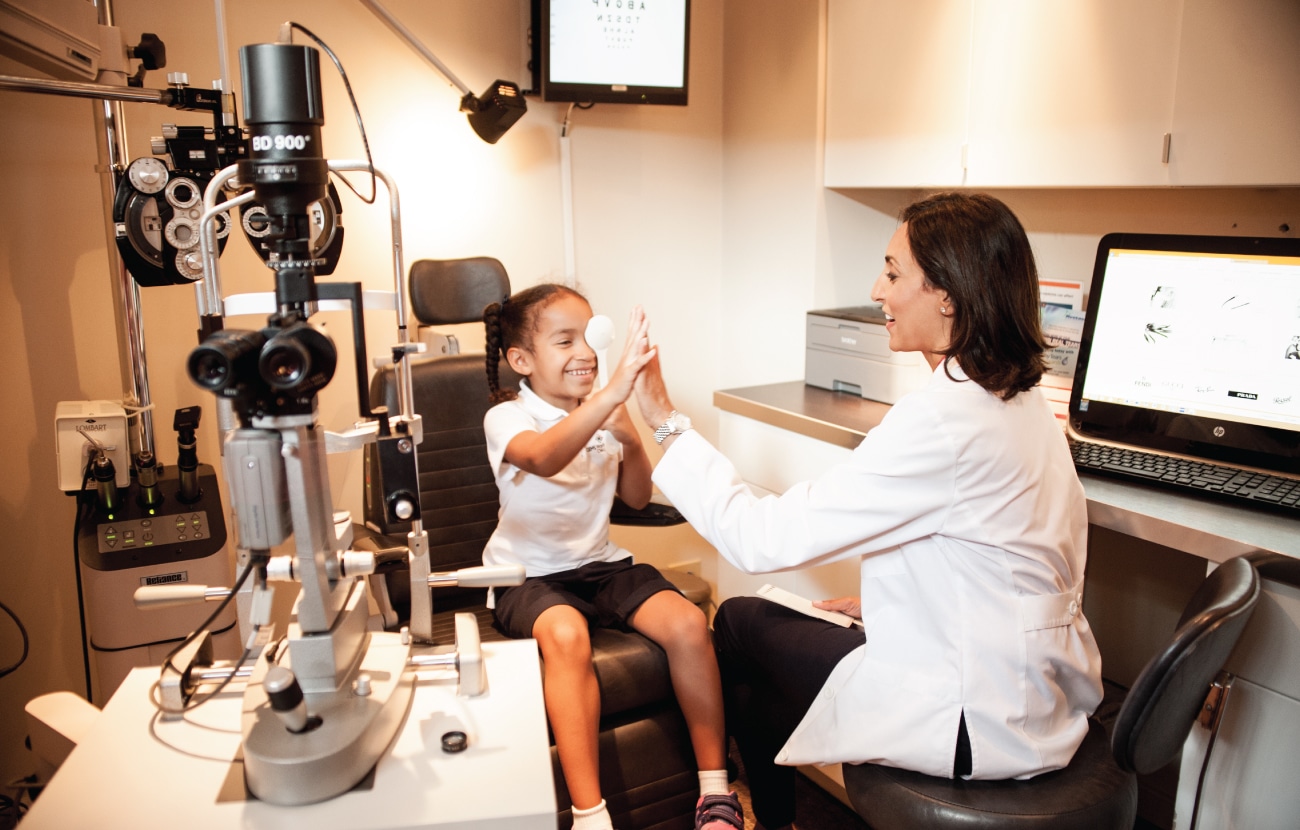Budget Friendly and Caring Optometrist Riverside for All Ages
Budget Friendly and Caring Optometrist Riverside for All Ages
Blog Article
The Comprehensive Eye Exam: What to Anticipate During Your Visit to the Eye Doctor
A see to the eye physician for an extensive eye test is more than a regular exam; it is a crucial step in safeguarding your visual health. What exactly takes place during the eye wellness evaluation, and how does it affect the prescription procedure?
First Consultation
The preliminary examination throughout an eye examination functions as a vital foundation for recognizing a patient's visual health and wellness needs. This stage establishes the tone for the whole assessment process, enabling the eye doctor to collect important info regarding the person's case history, lifestyle, and specific vision problems. By diligently examining any kind of pre-existing conditions, medications, or previous surgical procedures, the eye care expert can customize the examination to resolve specific requirements successfully.

In addition, the preliminary consultation is a chance for clients to articulate any worries or concerns, fostering a joint partnership with their healthcare provider. This interaction not only makes sure that the client feels educated and comfy yet additionally equips them to participate proactively in their eye health and wellness management. Jointly, these discussions make it possible for the eye doctor to develop a personalized exam plan, making certain optimum care and specific diagnosis.
Aesthetic Skill Test
Starting the core components of an eye evaluation, the aesthetic acuity examination is created to assess the sharpness and quality of an individual's vision. This important analysis assists figure out just how well a person can recognize letters or symbols at a standardized distance, commonly utilizing a Snellen chart (Opticore Optometry). The graph makes up rows of letters that reduce in size inside out, with the individual positioned at a normal range of 20 feet
Throughout the test, the client is asked to cover one eye and check out out loud the smallest line of letters they can see clearly. This process is duplicated for the various other eye. The results are tape-recorded as a portion, with 20/20 vision indicating normal visual skill-- where the patient can see at 20 feet what a person with normal vision can see at that range.
The visual skill examination also identifies possible refractive mistakes such as myopia, astigmatism, or hyperopia, which could demand rehabilitative lenses. By establishing a standard of aesthetic performance, the test is an essential analysis tool that aids the eye care expert in establishing a proper treatment strategy customized to the person's unique visual requirements.
Eye Health Evaluation
Following the aesthetic acuity examination, an extensive eye wellness analysis is carried out to make certain the overall well-being of the eyes. This essential section of the eye test involves an extensive analysis of both the interior and exterior structures of the eye.
With the use of ophthalmoscopy or fundus photography, the retina, optic nerve, and blood vessels are thoroughly assessed. In many situations, student dilation is performed to boost presence of the interior eye frameworks, although this may result in momentary light sensitivity for the patient.
Additionally, intraocular pressure is measured to screen for glaucoma risk. This is commonly done using tonometry, which can identify raised stress degrees that might suggest potential damage to the optic nerve. Jointly, these evaluations develop a detailed analysis to keep ocular health and wellness.
Refraction and Prescription
Refraction is an innovative procedure performed by eye care professionals to determine the exact lens power required to correct refractive mistakes such as nearsightedness, astigmatism, presbyopia, and hyperopia. The objective of this procedure is to analyze exactly how light bends as it passes through the eye, permitting the professional to determine whether restorative lenses are required for improved visual skill.
Throughout the refraction procedure, the person is asked to check out a phoropter, a tool that contains various lenses. The professional my review here will systematically change these lenses and ask the client to compare clarity in between choices till the very best possible vision is achieved. This procedure is crucial in crafting an exact prescription that specifies the ideal lens power for eyeglasses or call lenses.
The prescription stemmed from this procedure not just optimizes vision but also serves as a structure for picking ideal rehabilitative eyewear. It is important to guarantee that prescriptions are frequently updated, as modifications in vision can occur gradually, highlighting the relevance of regular eye examinations. This meticulous focus to detail helps keep clear, comfortable vision in day-to-day life.
Follow-Up Recommendations

Throughout a follow-up go to, the eye medical professional will certainly perform a collection of tests to assess visual skill and check for any kind of modifications in vision that could require an upgrade to the prescription. In addition, the follow-up provides a chance to talk about any pain or concerns experienced with present eyeglasses. Modifications can be made to guarantee comfort and efficiency, whether with lens modification or structure adjustments.
For clients with recurring conditions such as glaucoma, diabetes-related eye concerns, or macular Discover More Here deterioration, more regular follow-ups may be essential. These appointments are vital for taking care of and potentially slowing the development of eye illness. Abiding by these suggestions can substantially add to keeping aesthetic health and wellness and stopping long-lasting problems.
Final Thought
The detailed eye examination is a necessary process for preserving aesthetic health and wellness, encompassing a thorough analysis of case history and vision worries. Secret components consist of the visual acuity examination, which evaluates vision quality, and the eye health and wellness analysis, which analyzes the general condition of the eyes. Refraction tests help determine the accurate lens prescription essential for optimum vision improvement. Follow-up recommendations offer support for continuous eye treatment, guaranteeing that any prospective issues are resolved promptly and efficiently.
A see to the eye medical professional for an extensive eye test is more than a regular examination; it is an important step in guarding your aesthetic wellness.Kicking off the core parts of an eye assessment, the aesthetic skill examination is made to evaluate the sharpness and clarity of an individual's vision.Complying with the visual skill test, a comprehensive eye health evaluation is performed to ensure the general well-being of the eyes. These visits enable the eye treatment expert to monitor adjustments in vision, update prescriptions, and evaluate the general wellness of the eyes. Key parts consist of the aesthetic acuity examination, which examines sight clearness, and the eye health investigate this site assessment, which examines the total problem of the eyes.
Report this page